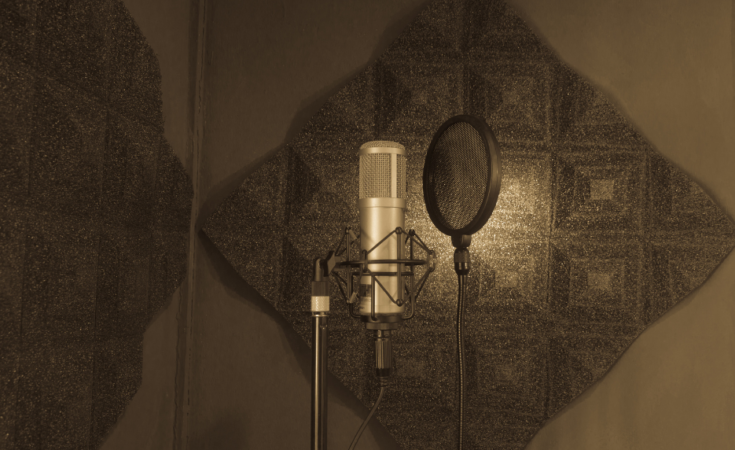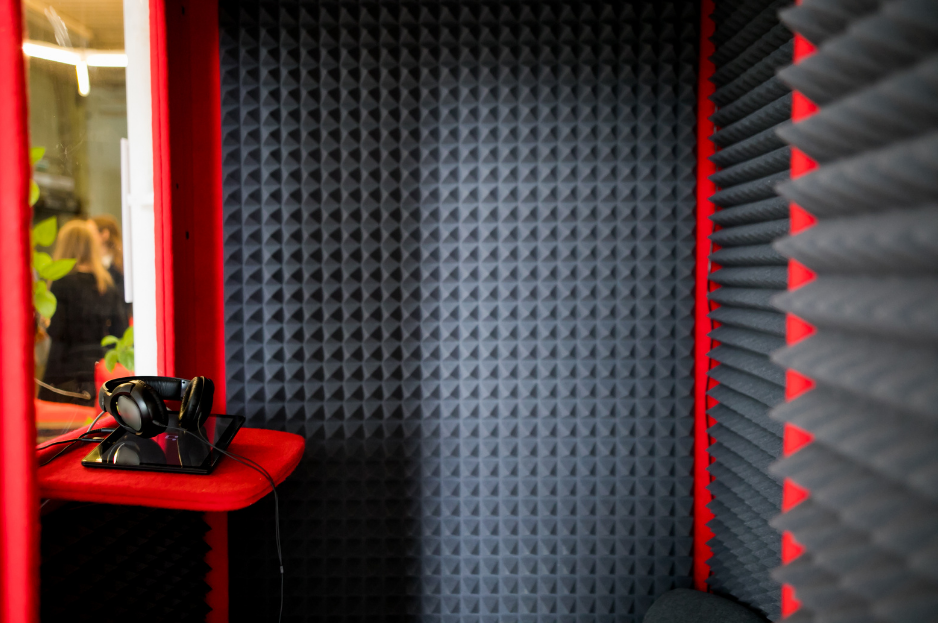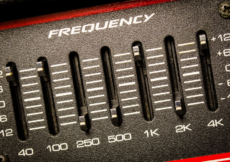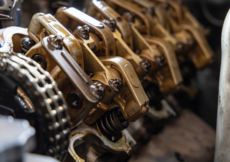If you’re a musician or sound recorder, you’re probably aware that finding a space to record good quality sound is not always easy. With so much going on, your house might be too loud, and professional recording studios are often too expensive.
Building a soundproof booth in your own home can give you the capacity you need to work, while producing recordings of a high standard that can then be used within your professional life and to promote yourself as an artist.
You may be wondering whether building a soundproof booth yourself is going to be too difficult or too expensive, but below we have laid out all you need to know about home sound booths, including how to create one and how to do it on a budget. And the best part? You don’t need to have a lot of room to do so.
So, whether you’re just starting out, are planning to record your next album, or you want somewhere to podcast quietly, a soundproof booth might be for you. Keep reading on to find out all about them and how you can build one in your home.
What Is A Soundproof Booth?
A soundproof booth is an enclosed structure that is constructed to provide isolation of sound. Usually used by musicians, these booths stop external sounds being picked up by the microphone as well as removing echoes and reverberation, also known as reverb.
With a sound isolation booth, audio is able to be recorded without background noise or echoes, which makes the sound much better quality. Sound recorded in these soundproof studio booths can then be uploaded online or used in editing software, and will sound professionally recorded.
Why Might I Need A Soundproof Booth?
A soundproof booth can be a useful space to have in your home, whether you’re a musician, actor, or sound recorder. With more and more of us working from home, it can be difficult to find a quiet space for music or vocal recording without being interrupted, and often renting out sound booths in studios are pretty costly.
Without the correct equipment, your recordings won’t sound sharp or crisp, and you may find your work isn’t appreciated as you intended it to be because of the poor quality. There may be noises or echoes heard in the background, or your microphone might pick up the sound of your neighbors talking. No matter how hard you try, a bad recording cannot be made to sound good, so it’s pretty important that you have a place to record properly.
A soundproof studio will give you the space you need to work no matter what project you are working on, and can be made on a budget. You also don’t need to worry about having a large area to build your booth in, because soundproof booths can come in all shapes and sizes. You can really customize them to your own needs. Creating a soundproof booth can also be cheaper that soundproofing a room. Let’s take a look at the different types of sound booths you might want to use.
Types Of Soundproof Booth
There are three main types of soundproof booth. Let’s take a look at them in more detail.
Permanent Sound Booth
A permanent sound booth is the most common type of sound booth, and this is that category that most DIY booths fall into. A permanent booth will offer the best quality recordings and sound absorption, and these are usually larger and more stable than other types of sound booths.
There are normally two different layers of sound isolation in a permanent booth. The first is on the outside and is to prevent external sounds from getting into the booth and being picked up by the microphone. The second layer is on the inside of the booth and is usually foam, blankets or panels that prevent reverb and echoes from ruining the recording.
Semi-Portable Sound Booth
A semi-portable recording booth, also known as a modular booth, is a great option if you don’t have a very large space in your house but still want good quality recordings. With a semi-permanent booth, you can assemble and disassemble it as and when you need it. One of these booths is made up of a frame and a sound-absorbing blanket. The blanket helps to stop noise from getting to the microphone and can also help with reverb.
The downside to these booths is that they are not as effective as a permanent one and you may end up recording some external sounds or pick up some echoes with the microphone. A semi-portable booth is often more expensive that a permanent one, too.
Portable Sound Booth
If you travel a lot or are constantly moving, a portable soundproof booth might be for you. As the name suggests, these soundproof booths can be moved around and are usually much smaller in size than a permanent or semi-permanent booth.
While these booths are small and lightweight and will fit easily in your car, they won’t allow for such a high standard of recording as other booths. While a permanent recording booth will surround your whole body, a portable vocal booth will surround just your head, or possibly even just your microphone.
These booths are available to buy on Amazon, or you can have a go at DIYing one, too.
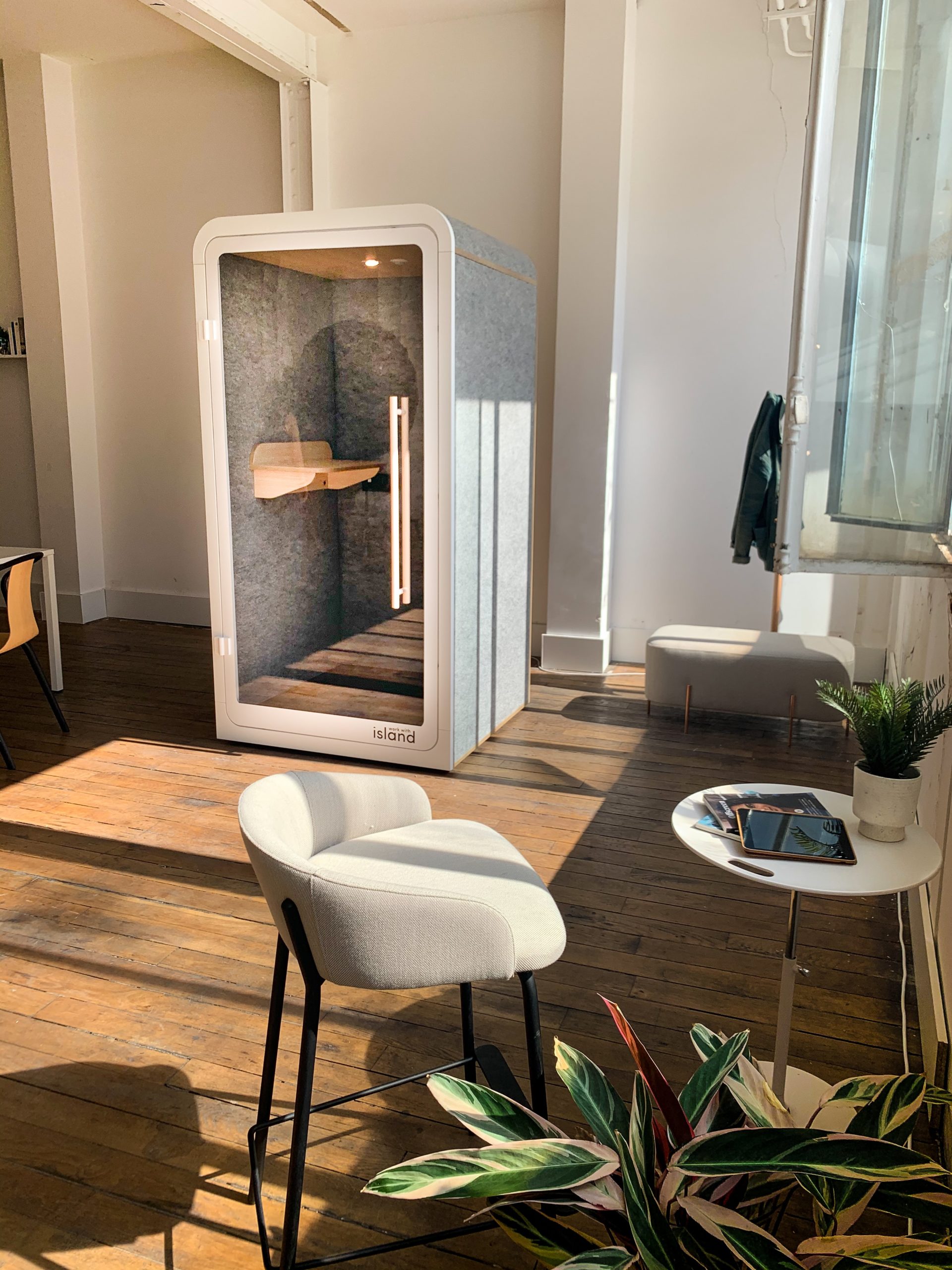
Materials Needed For A Soundproof Booth
In this article we are going to guide you step-by-step through creating a permanent sound proof booth. Before we get started on making it, there are some materials and tools you are going to need to invest in.
The materials you will need are:
- Plywood Sheets — these will be used to build the booth. The thicker the sheets, the better
- Acoustic Foam Panels — these are made of soundproofing materials and will soundproof the walls
- Sound-Absorbing Blanket — this is an amazing soundproofing material to further block out noise
- Door Sweep — this will help to soundproof the door of the booth
- Caulk — this is a soundproofing material that will also help to seal any gaps and holes
- Weatherstripping — this will also help to soundproof the door
- Wood For Frame
- Sheets of Drywall
- Sealant
- Door and Frame
- Door Handle
- Hinges
- Screws
- Drill Machine
- Screwdriver
How To Make A Soundproof Booth
Now you’ve got all your materials, it is time to get started with building your sound booth. DIY sound booths can vary in size and shape, so you can adjust this method to your needs.
1. Find A Suitable Area
Finding a suitable area for your sound booth is harder than it sounds. It needs to be an area that is minimally used, but also needs to be big enough for you to build the booth without feeling cramped. Many people build their sound booth in their basement, garage or attic.
2. Make A Plan
Are you building your sound booth from scratch? Or are you converting an unused room into a sound booth? Either way, you’re going to want to know your measurements. Think about whether the performer will be sitting or standing and how much space there needs to be inside. Draw up a plan so you know exactly what you are doing with all your materials.
3. Build The Walls, Ceiling And Floor
Once you have your plan in place, it is time to build the walls, the ceiling and the floor. This is done by constructing a wooden frame, built to the size you would like your booth to be.
Once this is built, you can add the plywood to the walls, ceiling and floor. We recommend using thick plywood to help with the soundproofing of the booth.
Don’t forget to measure the correct space for your door and ensure to secure the door frame into place before moving any further.
4. Secure The Door
When all the walls, ceiling and floor are fixed into place, it is time to secure the door. Ready-made doors are easier to use and pretty simple to find. We recommend you buy a solid door rather than a hollow one, because this will help to better soundproof your booth. However, if you have a minimal budget, a hollow door can work just fine.
Once you’ve got the door, all you need to do it properly install it in place in the frame. Do do this you will need to use your screws and the door hinges. Once it is securely in place, you can also install your door handle.
If you are converting a room that already has a door into a booth, you can check whether the door is solid or hollow my knocking on it. If it is hard and solid like your front door, then it is solid. However, if it sounds and feels like cardboard, then it is hollow. If you already have a hollow door, you don’t necessarily need to replace it.
To make the door soundproof you can use a sound-absorbing blanket and then add a door sweep to prevent sound from coming through the base of the door. You can also add these to your solid door for further sound dampening. For more tips on how to soundproof a door you can check out our dedicated guide.
5. Install The Soundproofing Materials
Your booth is now in place, so it is time to add the soundproofing materials to the booth. These are the drywall and the foam acoustic panels. You can use both of these or just one, but make sure they are attached properly to the walls and ceiling so they won’t move.
6. Caulk The Booth
Once the soundproofing materials are all in place, your booth is almost ready. One of the final things you should do is caulk any gaps and holes, to help prevent sound from seeping into the booth.
It is at this point that you can also install the weatherstripping around the door frame. This will prevent air from getting in and out and thus sound getting in and out of your booth.
Tips For Building Your Sound Booth
Add A Soundproof Floor
It is not always compulsory to soundproof the floors of your booth, but you may wish to do so. The best way to do this is to add carpet to the bottom of your booth and place drywall underneath, or, if you already have carpet, to take it up and add drywall underneath before placing the carpet back down.
This can be expensive, so if you would like a cheaper option, try rugs. Rugs are also great at adding further protection against noise and reverberations.
Use A Silicon Based Sealant
A silicon based sealant is much better than a regular sealant when it comes to filling gaps and holes. This is because silicon is a natural adhesive and will help to soundproof it better.
Use Soundproof Paint
You may want to paint your soundproof booth with a soundproof paint to help further keep noise out. Soundproof paint is a heavy water-based paint and is usually very thick. It may increase the thickness of your booth walls by 0.2 centimeters.
Drill Holes
You will probably need to have some holes for wires if you are recording sound in your sound proof booth. You should drill holes that are exactly the same size as the thickness of the wires. This way, the wires will just fit through the gap and there won’t be room for sound to get in or escape the booth.
Booths For Different Budgets And Uses
While above we have laid out instructions on how to build a basic soundproof booth, this booth can be modified depending on your budget, space, need and use. If you’re looking for something very cheap, you can build a soundproof booth for less than $25. On the other hand, if you want something more permanent that is of better quality, you could end up spending a lot more. Some of the most popular options for different budgets are:
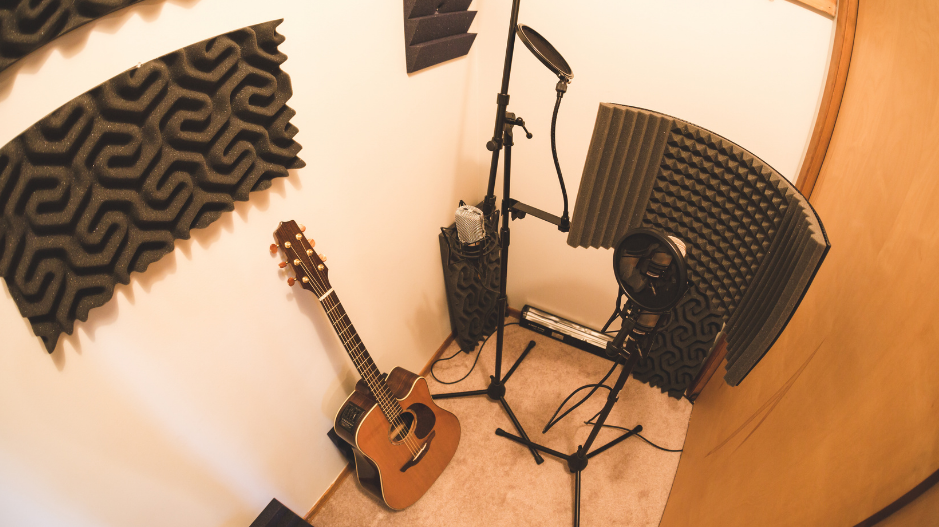
Turn Your Closet Into A Booth
If you don’t have a lot of spare space in your house, you could turn your closet into a soundproof vocal booth on a budget. A closet can be a great space to do this, because it is small enough that echoes are not too loud, but also has a door and walls around it already and is fairly isolated from exterior noise. It is also cheaper than building a booth from scratch.
To turn your closet into a sound booth you will need to remove any existing shelves or racks, and ensure there is a light in there. You’ll also need some electrical outlets in the closet if you are planning on recording in there.
Before you get recording in your closet, add some soundproofing materials. These materials can be the same as the materials used to soundproof a DIY booth built from scratch. You can also add a rug or a carpet to the closet to muffle footsteps and extra sound.
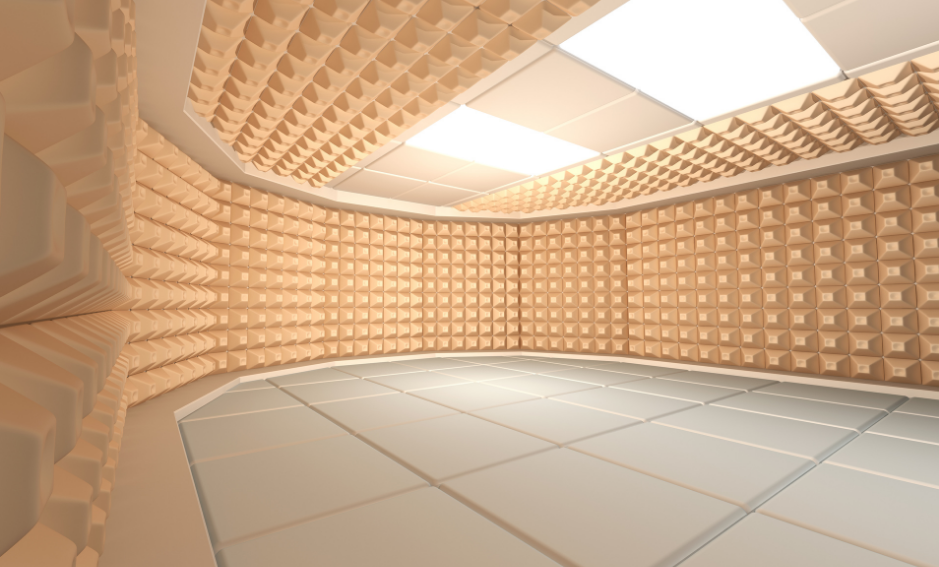
Build A Professional Sound Booth
If you really do have the budget, you could go all out and build a professional sound booth. This could be an extension to your house, in your garage, or built in your yard somewhere. A professional booth would be made out of stone, almost as if you were building an entirely new part of your property. You would then line this with the soundproofing materials of your choice, and you would have a dedicated area for all your recordings.
While this is expensive, if you’re serious about recording or are a professional musician, it may be worth investing in a professional booth. Building one could end up saving you a lot of money in the long run, as you wouldn’t need to rent out a sound booth elsewhere. It would, of course, also greatly increase the standard of your recordings, too.
If you’re planning on building a professional sound booth, make sure you know what you are doing. If you have the budget, you could always hire a professional builder to do the work for you, so you know your booth will be of the best quality.
Mini Voiceover Sound Booth
A mini sound booth is excellent for voice-over artists, or those experimenting with sound recordings. Instead of being a walk-in sound booth, which are needed for those recording musical instruments, a mini voice booth can just cover your microphone.
A mini sound booth can be made for as little as $20, out of some cardboard and acoustic foam. The booth may have two sides in a V-shaped position, or may be more of a box shape (ie. a cardboard box turned on its side). Your microphone is then placed inside of the cardboard and foam. You can add extra soundproofing to these with simple materials such as towels and sheets, which will all help with noise reduction.
These booths may not give the best quality soundproofing, but are great for those who are on a budget or trying out recordings for the first time. They are also portable and don’t take up too much space, which is a bonus for many.
Soundproof Booth FAQs
Does a DIY sound booth actually work?
You may be sceptical about building your own home studio because you’re not sure whether it is actually going to work as well as a professional one. Depending on your budget, you may be surprised at how well a DIY booth can work.
Of course, if you really are on a tight budget, your booth isn’t going to be of the best quality and may not soundproof your recordings as much as you’d like. However, with the right materials, you can greatly increase the quality of your sound recordings and keep excess sound from getting into your space. The more materials you use and the better the structure, the better the booth is going to work. And don’t forget to seal any holes, because it really will make a difference.
How much does a soundproof booth cost?
A soundproof booth can vary greatly in price, so there is not one easy answer for this. You could create a large booth with bigger and better materials that could be $1000 or more, or you could create a much smaller one on a budget for around $25. You could even create one in a spare closet in your house for little money. Whatever your budget is, you should be able to make it work for your needs.
Should I use acoustic foam or drywall for my soundproofing materials?
Both acoustic foam and drywall can be effective at soundproofing a booth. It is up to you which one you want to pick. Drywall is a panel made of calcium sulfate dihydrate that is pressed between two layers and is very easy to find at the hardware store. It is also simple to install in your booth with screws.
Acoustic foam can be a little harder to find, and you’ll need to know what you’re looking for. However, it can be great for soundproofing and, because it comes in lots of different shapes and sizes, it can be placed in different patterns on the ceiling and walls of your booth so you can make your booth look really cool. Studio foam is excellent at absorbing noise and reverberations.
If you are unsure which to pick and have the budget for it, choose both foam and drywall to soundproof!
Soundproof Booth Summary
You don’t have to go out to a professional studio every time you want to record something of high quality. Whether you’re a seasoned musician, are recording an audiobook or just want to play around with sound recording, a DIY soundproof booth can give you the space you need to work comfortably from your own home.
Soundproof booths can come in many different shapes and sizes; you could convert you basement, build a small booth in your attic or try recording in your closet — it doesn’t matter, as long as it works for you. We hope you have found this guide on soundproof booths helpful and it has assisted you in building the booth of your dreams.

